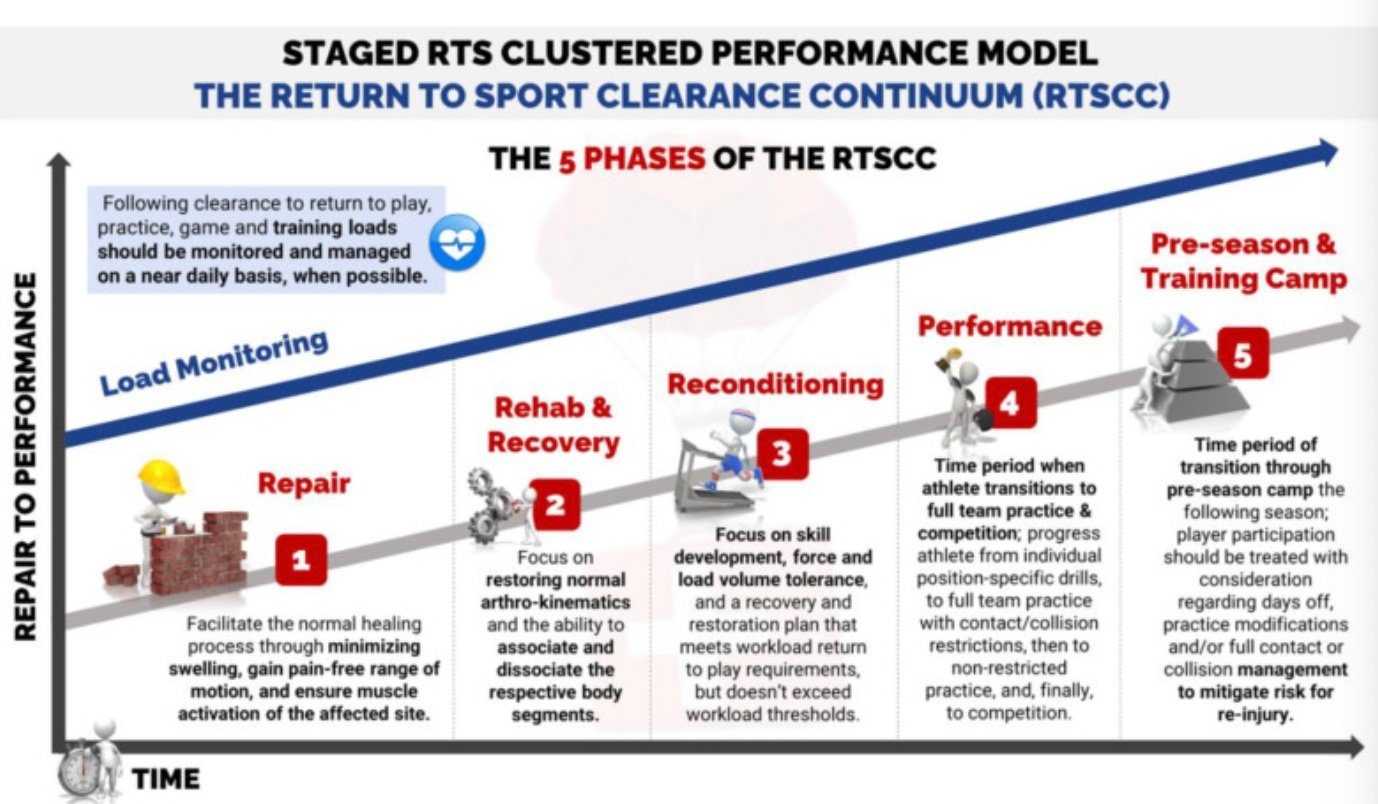Return to Work vs. Return to Sport
Physical therapists are movement experts that work with a variety of patients to provide post-injury rehabilitation including treatment for work injuries and sports injuries. Once the initial pain and inflammation from the acute injury are managed, physical therapists take a progressive approach to strengthening the affected area, restoring range of motion and mobility, and preparing the patient for a safe return to work and sport. Rehabilitation for return to work (RTW) and return to sport (RTS) is customized to the patient’s specific needs, duties, and necessary skills to ensure the patient can succeed upon their return to work or sport. Physical therapists work closely with the injured worker and athlete’s employer, coach, attorney, athletic trainer, and doctor for a coordinated return to the job or sport.
What does a Return-to-Work Program Involve?
At the start of treatment, the physical therapist performs a functional baseline test to assess the work injury and evaluate the injured worker’s physical capabilities and tolerances, comparing the worker’s health and function to the demands of their job. From there, the therapist designs a personalized treatment program tailored to the worker’s condition and goals. Throughout rehabilitation, the therapist will evaluate the worker’s progress against the baseline functional test as the worker moves through treatment, from pain management to aquatic therapy and range of motion and strengthening exercises. Once the worker has achieved sufficient progress in their recovery, they will transition to a return to work (RTW) program.
work-focused functional retraining
an individualized work simulation
body mechanics training and injury prevention strategies
job accommodation and ergonomic recommendations
total body strengthening and conditioning to prepare for the demands of the workday
It is essential to implement functional activities that mimic the workplace’s essential job functions, e.g. heavy lifting, high repetitions of the same task, or enduring a long duration of standing or walking. The therapist then conducts a functional capacity evaluation, which is an objective assessment to measure the worker’s functional physical capabilities, comparing the worker’s health status, body functions, and bodily structures to the demands of the job and the work environment to determine the worker’s ability to participate in and return to work.
What is a Return to Sport Protocol?
A return to sport protocol is essential to ensure that an athlete can safely return to competition and avoid future re-injury. At the start of treatment, the physical therapist conducts a functional baseline test to evaluate the sports injury and determine the athlete’s current physical abilities and limitations. From there, the therapist designs a customized sports injury rehabilitation program including pain management, manual therapy, dry needling, aerobic conditioning, and targeted strengthening. Once the athlete has sufficiently progressed in their recovery, the athlete then moves on to a return to sport (RTS) program and testing protocol before returning to competition.
The RTS program includes speed and agility training; balance, proprioception, and plyometric drills; aerobic endurance training; targeted strengthening; neuromuscular training; and sport-specific functional movement instruction to prepare the athlete for return to sport. The therapist works with the athlete to gradually rebuild load tolerance in the injured joint, muscle, ligament, or tendon. Throughout the RTS program, the therapist continues to perform functional testing to objectively measure the athlete’s improvement and readiness to progress to the next level of intensity and training in the program.
Once the athlete has completed the RTS program, the therapist conducts a functional RTS testing protocol to objectively determine the effectiveness of rehabilitation and readiness to return to sport by measuring the athlete’s functional movement patterns, running mechanics, strength, power, endurance, aerobic capacity, speed and agility, and balance and proprioception.
Repair Phase: Initial treatment includes pain management, range of motion exercises, muscle activation at the injured site, and gradual load volume tolerance to facilitate a normal healing process.
Rehab & Recovery Phase: Restoration of normal joint and muscle movement, targeted strengthening, and body positioning and movement retraining.
Reconditioning Phase: Focused on re-developing sport-specific skills and enhancing force and load volume tolerances at the injured site. The therapist designs a return-to-sport program to replicate the demands of the sport and develop sufficient agility, strength, motor control, and speed in the athlete to return to sport safely.
Performance Phase: Once the athlete passes the RTS testing protocol, he can transition to full-team practice and competition, progressing from position-specific drills to full-team practice with contact and collision restrictions to finally, non-restricted practice and competition.
Pre-Season & Training Camp Phase: Following the competitive season, it’s essential that the athlete take extra precautions during pre-season conditioning and training to mitigate the risk of re-injury. Special attention should be given to developing the appropriate strength and conditioning to support the injured site.
Return to work and return to sport programs share the same goal: that the worker and athlete can safely return to work or athletic competition and can meet the demands of the job or sport with sufficient strength, power, and endurance. Physical therapists play a key role in helping injured workers and athletes recover from injury and prepare for a successful return to the job or sports field through a gradual, progressive RTW or RTS training program and objective testing.

